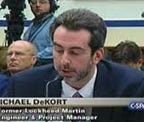X-Plane cannot be used for critical aircraft development, pilot training or certification
In 2014 I went to work for a company called F2Si here in Pittsburgh. At the time they were severely behind on two FAA Level 6 fixed wing simulator contracts. Given my background in fixed and rotary wing simulation (FAA Level D) I volunteered to take over those projects and see if I could turn them around. Soon after I discovered they were using X-Plane as the core host as well as for all location and object models. This meant they were using X-Plane as the real-time controller as well as to create the specific aircraft models required. Upon hearing this, it immediately made no sense to me. If using a gaming system was possible, everyone would do it. I asked the folks that made this decision why they were doing this. They said it kept the cost so far down they could severely underbid others and win the contracts. Then I asked if they had ever built an FAA Level 6 or above simulator before. They said no.
Warning. . . warning Will Robinson!!!!!!!!!!!!!
No one uses X-Plane or any gaming architecture-based system for an FAA Level 6 or above simulator. For any purpose. Why? Because it cannot produce the model fidelity or real-time capabilities required. The root cause of that is multi-faceted. The core architecture is non-deterministic. And the models or parts of models are not federated. (They do not run as isolated executables.) Which means the system runs all the math all the time, with no concern for task order or efficiency (some task can run at 10hz, some at 60hz etc.) All of this wastes clock cycles resulting in the math required to run the models and simulation cannot be completed fast enough. That in turn means models and groups of models cannot be very detailed. As well as creating visual, flight control and motion system latency that degrades the flight model and makes people sick. As well as models that do not act the way they should.
Regarding model fidelity, X-Plane also does not have enough tunable criteria to precisely model many objects, especially the flight and engine models of aircraft. This results in the inability to change only one aspect of the models, grouping many together by default, and not being able to run cascading faults properly because there is not enough detail in each model to ensure they operate correctly. An example would be modeling a large cross section of the wing or not modeling the exact performance curve of the controls or engines through various conditions. In the FAA Part-60, the document that describes the simulation levels the significant departure point is between levels 5 and 6. Level 5 allows for generic cockpit familiarization and flight training. Level 6 is for specific aircraft. There is a statement in the document that states the models shall have “the form, fit and function” of the target system. While X-Plane is fantastic for what it does, which included FAA Level 5 simulators (not aircraft specific and no motion or visual system required) and can be used for general aircraft development and pilot (human or machine) training and certification, it cannot and should not be used for any critical aircraft or pilot specific and critical development, training, or certification. As it will provide misleading, incorrect, and dangerous results, especially where the models are pushed, in crash or edge case scenarios and through cascading or simultaneous faults.
F2Si refused to let me remove X-Plane and X-Plane refused to let me help them make a new version of their product to solve this. F2Si went bankrupt.
(I should not that simulation is not currently used to certify aircraft. That however is currently being worked on through SAE’s G35 Committee.)
More detail in my article here
Urban Air Mobility — Four Paths to Disaster
· https://imispgh.medium.com/urban-air-mobility-four-paths-to-disaster-9dd3966f85e2
My name is Michael DeKort — I am Navy veteran (ASW-C4ISR) and a former system engineer, engineering, and program manager for Lockheed Martin. I worked in fixed and rotary wing aircraft/constructive DoD/aerospace/FAA simulation, the software engineering manager for all of NORAD, a software project manager on an Aegis Weapon System baseline, and a C4ISR systems engineer for DoD/DHS and the US State Department (counterterrorism). And a Senior Advisory Technical Project Manager for FTI to the Army AI Task Force at CMU NREC (National Robotics Engineering Center)
Industry Participation — Air and Ground
- Founder SAE On-Road Autonomous Driving Simulation Task Force
- Member SAE ORAD Verification and Validation Task Force
- Member UNECE WP.29 SG2 Virtual Testing
- Stakeholder USDOT VOICES (Virtual Open Innovation Collaborative Environment for Safety)
- Member SAE G-35, Modeling, Simulation, Training for Emerging AV Tech
- Member SAE G-34 / EUROCAE WG-114 Artificial Intelligence in Aviation
- Member Teleoperation Consortium
- Member CIVATAglobal — Civic Air Transport Association
- Stakeholder for UL4600 — Creating AV Safety Guidelines
- Member of the IEEE Artificial Intelligence & Autonomous Systems Policy Committee
Presented the IEEE Barus Ethics Award for Post 9/11 DoD/DHS Whistleblowing Efforts
